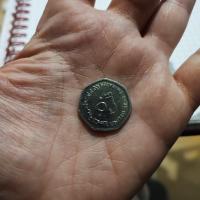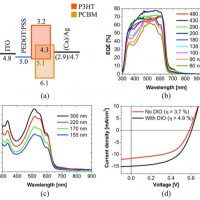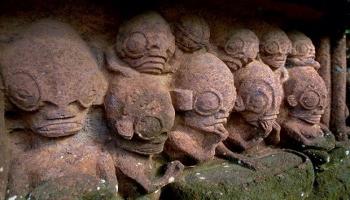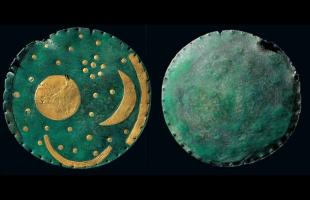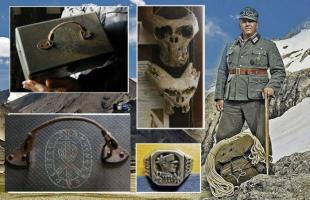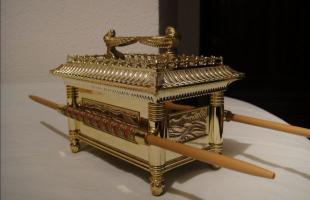The coin of Pertinace

This coin of Pertinace, often described in ufology books and sites, is a denarius of the emperor Publius Elvius Pertinax (193 AD) which shows on the obverse the laureate head of the sovereign and on the reverse the personification of Providentia deorum, standing, facing left with his right arm raised towards a globular object from which some rays emerge. The legend reads PROVID (ENTIA) DEOR (VM) COS II.
The "discover" was reported for the first time by Remo Cappelli in 1960, and then repoted again by the same author in an article published in February 1979 in the magazine "La Numismatica". Cappelli describes a strange object that would be depicted on this coin, a flattened disk from which four asymmetrical appendages extend (two on each side), ending in a bulge. However, the proposed image is blurry and the coin is very damaged and worn, so much so that not even the writing appears legible.
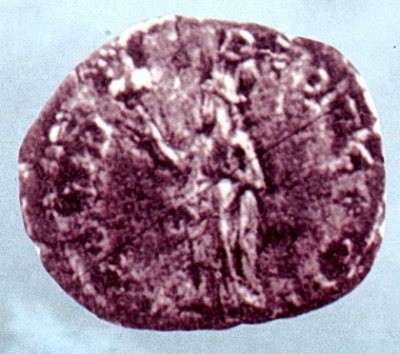
The topic was then discussed again in It's not terrestrial by Peter Kolosimo, who described the mysterious detail as
«a real globe with antennas strangely similar to those of our first artificial satellites »
adding that
« numerous experts, after having carefully examined the coin, agreed in stating that the object represented cannot be either the Sun, the Moon, or another celestial body. This certainty comes from the fact that the four "rays" of the globe in question are arranged in a completely different way from that characteristic of the usual representations of the stars (...) Looking carefully at the coin, one cannot help but notice how the representation is too careful: the unknown craftsman knew perfectly what he had and wanted to represent, and the resemblance of the coin is astonishing to say the least with the vehicles we place in orbit around the Earth.»
The strange object depicted on the coin, bearing the legend "Providentia Deorum Cos II" appears as a crushed globe, equipped with four "antennae" that have an enlargement at the ends. Did those who ordered its minting intend to commemorate an event observed in the skies of ancient Rome?
Are there better photos of the Pertinax coins? certainly, and it was not difficult to find them on various web pages that deal with numismatics
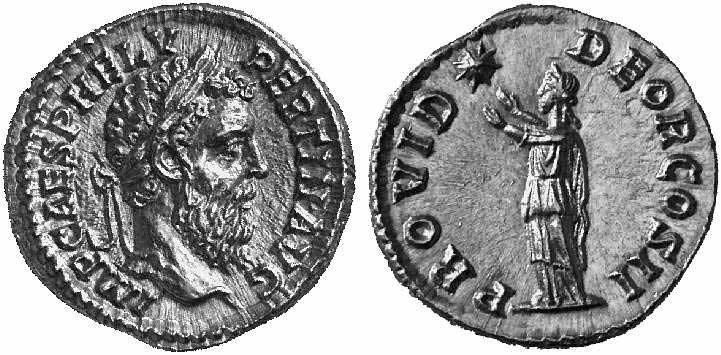
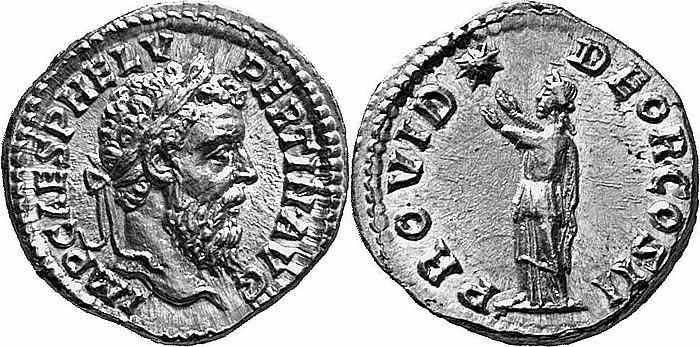
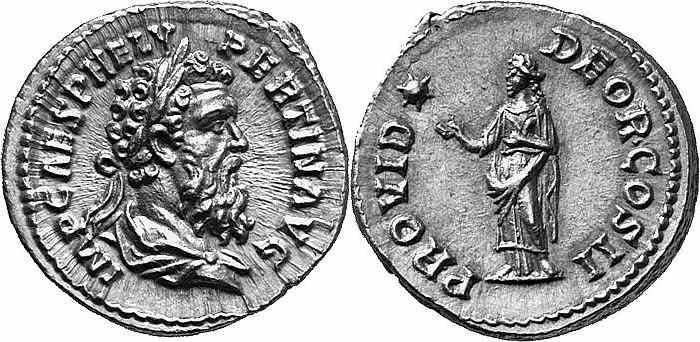
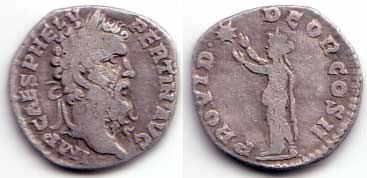
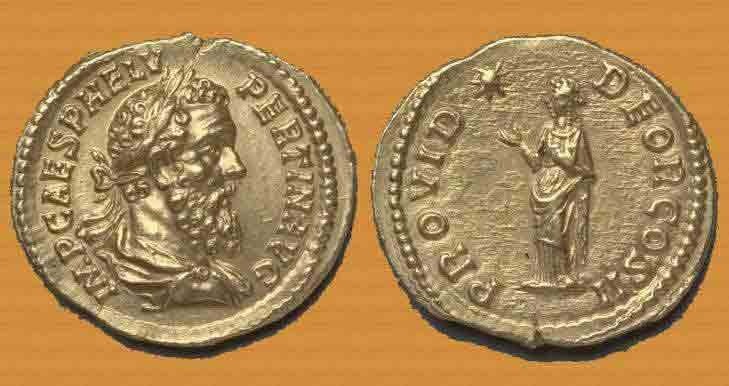
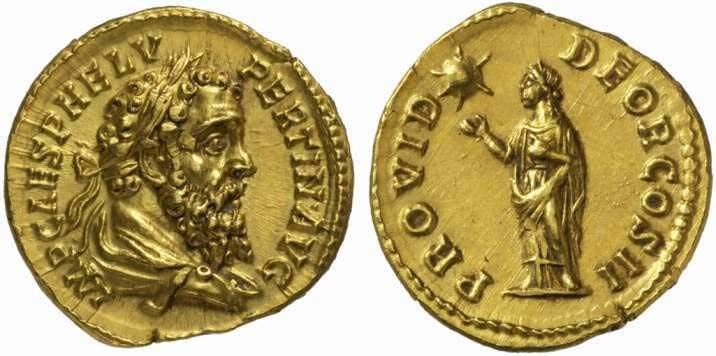
Let's try to enlarge two of them, to observe them better.
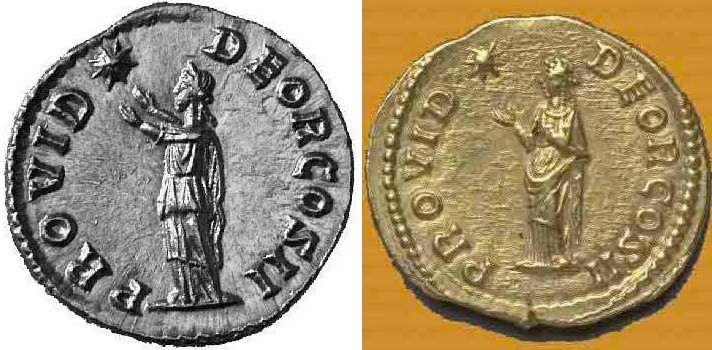
We note first of all that the coins are not the same, they do not derive from the same minting. Each has more or less obvious variations, for example the so-called "antennas" are six or eight and do not have bulges. It may be that the specimen observed by Cappelli was a further variant, but we know well that even the coins taken from the same mint, due to the more or less decisive, more or less regular hammer blow, could present mismatches, decentralization of the image or other irregularities.
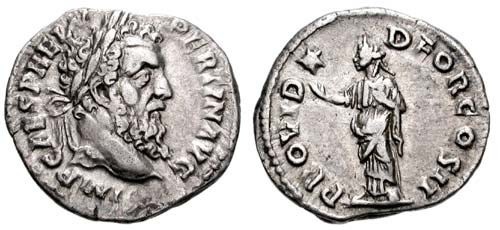
But let's get back to our mysterious detail. I would like to ask a question to anyone who is observing the coins at the moment: "what do you think that object towards which Divine Providenceextends its arms is ?". It could be said to be a representation of the Sun or a Star (even numismatic catalogs define the detail as a "radiated globe" or star), certainly not an "artificial satellite".

Stefano Struffolino Krüger, in The curious iconographic interpretation of a denarius of Pertinax (in "Rivista Italiana di Numismatica e Scienze affini", Vol. CIV, 2003, pagg. 561-564) recalls that, according to the historian Herodian, towards the end of the principality of Commodus (the predecessor of Pertinax)
« for long periods the stars were visible in broad daylight, some had an elongated shape and seemed suspended in mid-air.»
Pertinax therefore could have represented with this emission an astral event as rare and spectacular as the passage of a comet. The case would not be isolated, we remember the coins of Augustus minted in commemoration of the death of Julius Caesar bearing the comet that would have crossed the skies of Rome in the year 44 BC.
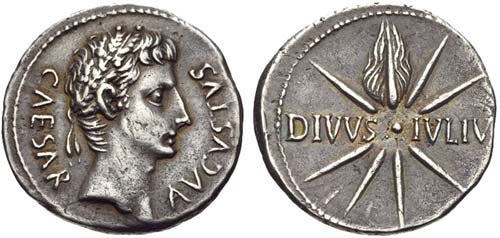
But, Struffolino warns that "the apparitions of stars and celestial phenomena, also seen as warning wonders, were in ancient times traditionally linked to historical events of particular importance; for this reason it is difficult to establish whether it is a question of literary mythification a posteriori or of phenomena that actually occurred" and ends by writing that "the Dictionary of Roman Coins specifies that, in the particular case of the coinage of Pertinax, Providence seems to accept the globe that can occasionally being adorned with rays, as it descends from above as if it were a divine gift. Finally, one could think of a symbol of glorification of the emperor himself, who is sent to earth for the salvation of humanity (coelo demissus)."
Finally, other Roman coins containing depictions of stars:
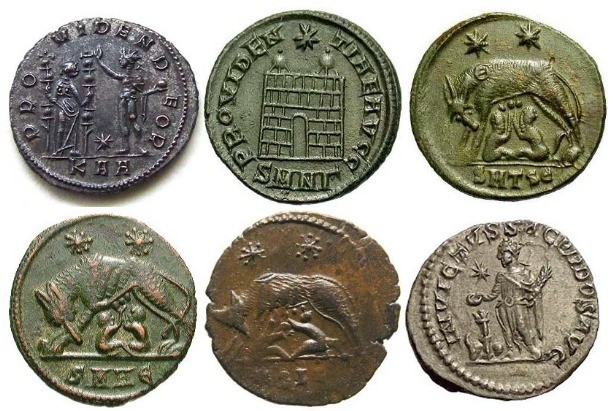
We move our research outside Tuscany, but always remaining within a national context. Here we face a new mystery which manifests itself this time in the numismatic field, presenting a truly high strangeness index. Let's carefully analyze this new mystery.
Emperor Publius Aelius Pertinax (126-193) was born in Alba Pompeia, present-day Alba (Cuneo) in the Piedmontese Langhe. Acclaimed emperor on January 1, 193, he was assassinated on March 28 of the same year. During the three-month period in which Pertinax was in power, the coins minted in his honor are classified by numismatic experts with four "Rs", in other words the highest level of rarity. Among these, one in particular caught the attention of experts due to the presence of a very strange detail.
It was Remo Cappelli, a famous and expert numismatist, who spread the news of the discovery of this oddity way back in 1961. The specimen, which was a silver denarius, had been found in Syria. On the front (see photo) you can see the emperor, while the reverse, within the words providentia deorum cos II, shows a standing female figure while pointing to the top left with her right hand a strange suspended object, similar to a sphere with four unusual asymmetrical protuberances, each ending in a bulge.
Cappelli, noted that the representation of this object was not usual in the iconography for the stars, such as the sun, the moon, the planets or comets, which were in use in known Roman coinage, for this reason the meaning it must have had was certainly different from the one accepted. According to him it had to be the representation of an anomalous celestial phenomenon, even comparable to current UFO phenomena. Ancient Roman historians report a huge amount of unusual aerial events. It should be noted that even during the reign of Pertinax there were several of these mysterious aerial objects that flew over the skies of the empire. Cappelli also lists some coins that present the same anomaly.
In Italy, unusual specimens were preserved at the historical-archological museum “Federico Eusebio” in Alba, but were unfortunately stolen in the early 1970s. I will not formulate any hypotheses, we will have the opportunity to resume and delve deeper into this mysterious case of ancient coins depicting unusual celestial objects out of place. I prefer to leave readers with a personal elaboration of the phenomenon.









